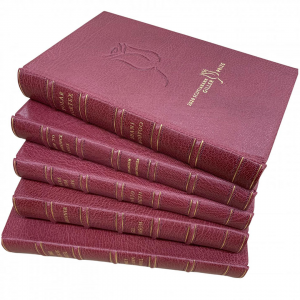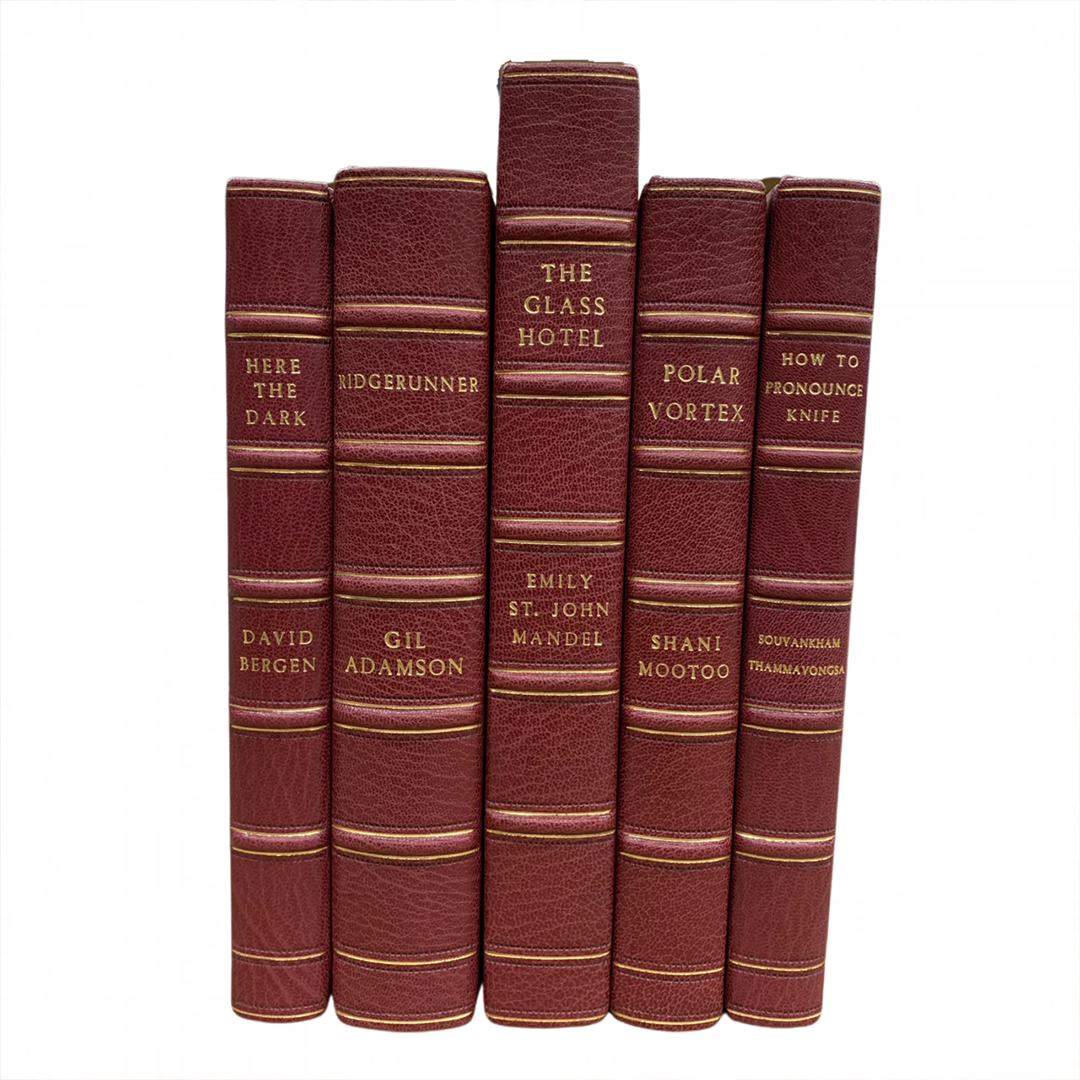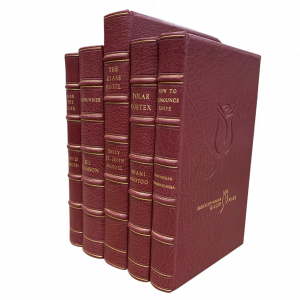Felton Bookbinding and the Scotiabank Giller Prize
November 5, 2020

Each year, we gift the Scotiabank Giller Prize shortlisted authors a leather-bound copy of their book as a keepsake to commemorate the experience. Since 2000, the Scotiabank Giller Prize has been working with the amazing team at Felton Bookbinding to create these beautiful pieces of work. Bookbinding is a fascinating art form that not a lot of people know about. So, we asked Keith at Felton Bookbinding a few questions. We wanted to share his answers with you in hopes that you might learn something new.
1. How was Felton Bookbinding established?
I came to Canada in 1982, to work for a bindery in Toronto that had wanted to get into restoration and leather work. In ‘82 there was a bad recession, and although they had told me there might not be a job for me, I came anyway. I was staying with friends in Georgetown, and when the job fell through, they loaned me $5,000 to start on my own. In a rented 10′ x 10’ room, Felton Bookbinding was born.
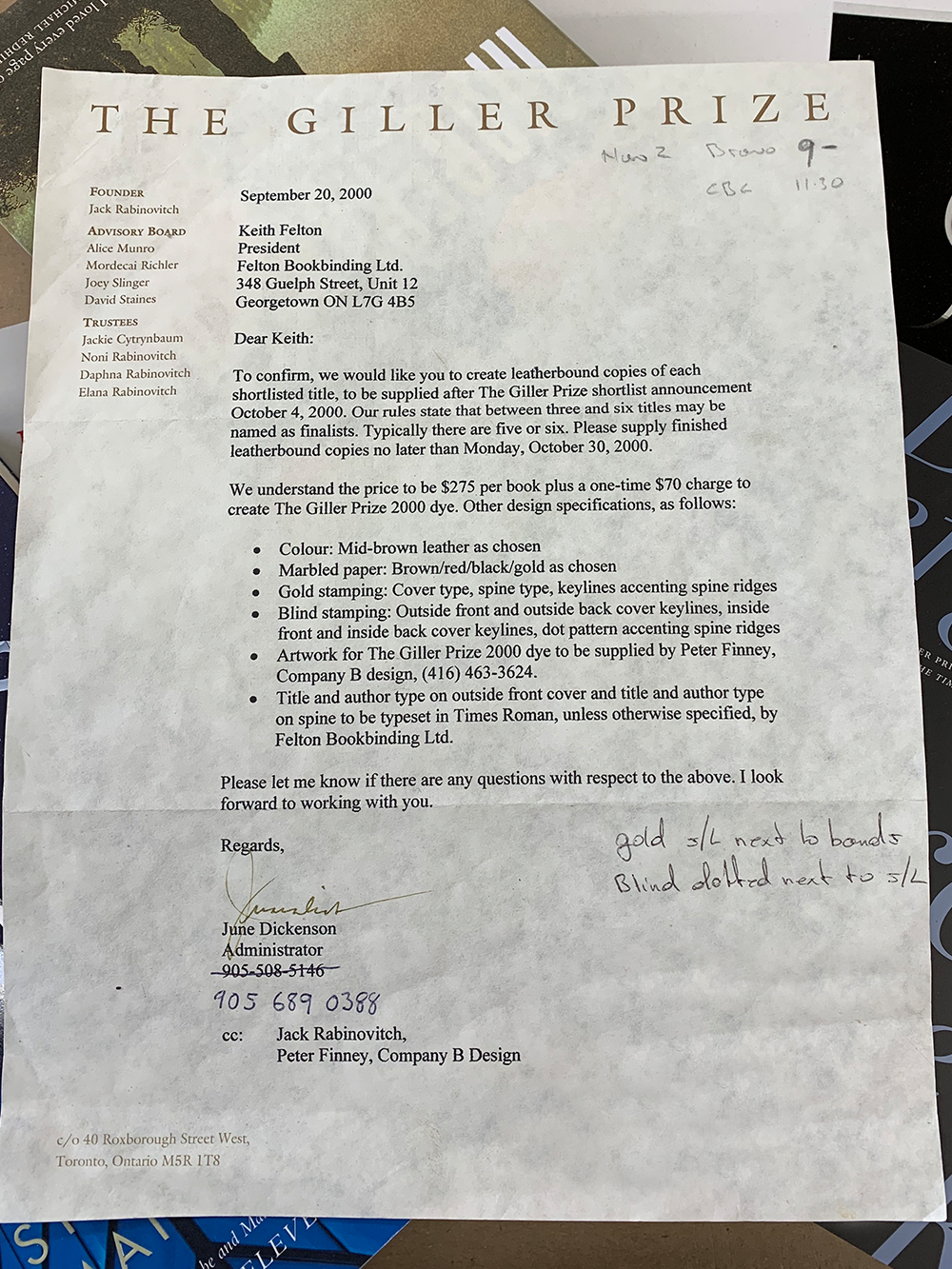
2. How did you get involved with the Scotiabank Giller Prize?
The Giller Prize (as it was back then) approached us in 2000, to take over the presentation copies. We redesigned the books and used the very best bookbinding leather. That’s how this wonderful relationship was born!
3. What inspired you to become a bookbinder?
To be honest, I had never heard of bookbinding when I left school at 16, in London, England. I wanted to be a printer because that’s where the money was at the time. Bookbinding is the bottom end of the printing industry, somehow I had an interview and two-week trial at this tiny hole in the wall bindery in south London. My instant reaction was “I’m not staying here.” It was like something out of Charles Dickens, but to my surprise, I liked it, and was good at it, so I signed up for a five-year apprenticeship. This began a life of struggle and poverty as a bookbinder – haha!
4. What are some interesting projects you’ve worked on?
There have been so many projects over the years, but probably our greatest challenge was Antarctica a 1000 copy, limited edition that weighed around 30 pounds each! This massive tome and matching clamshell took us six years to bind and complete. It won so many awards, and in sheer size, is probably our greatest accomplishment.
Speaking of size, inspired by what we did with Antarctica, along came Within an African Eden which weighed 35 pounds each, for a South African publisher, This project was several hundred copies, and even more challenging than Antarctica.
5. What’s your favourite part of the bookbinding process?
I would have to say the creative part. I love designing one-of-a-kind pieces, as well as limited editions, and still get a tremendous rush of pride when pieces of our work sell.
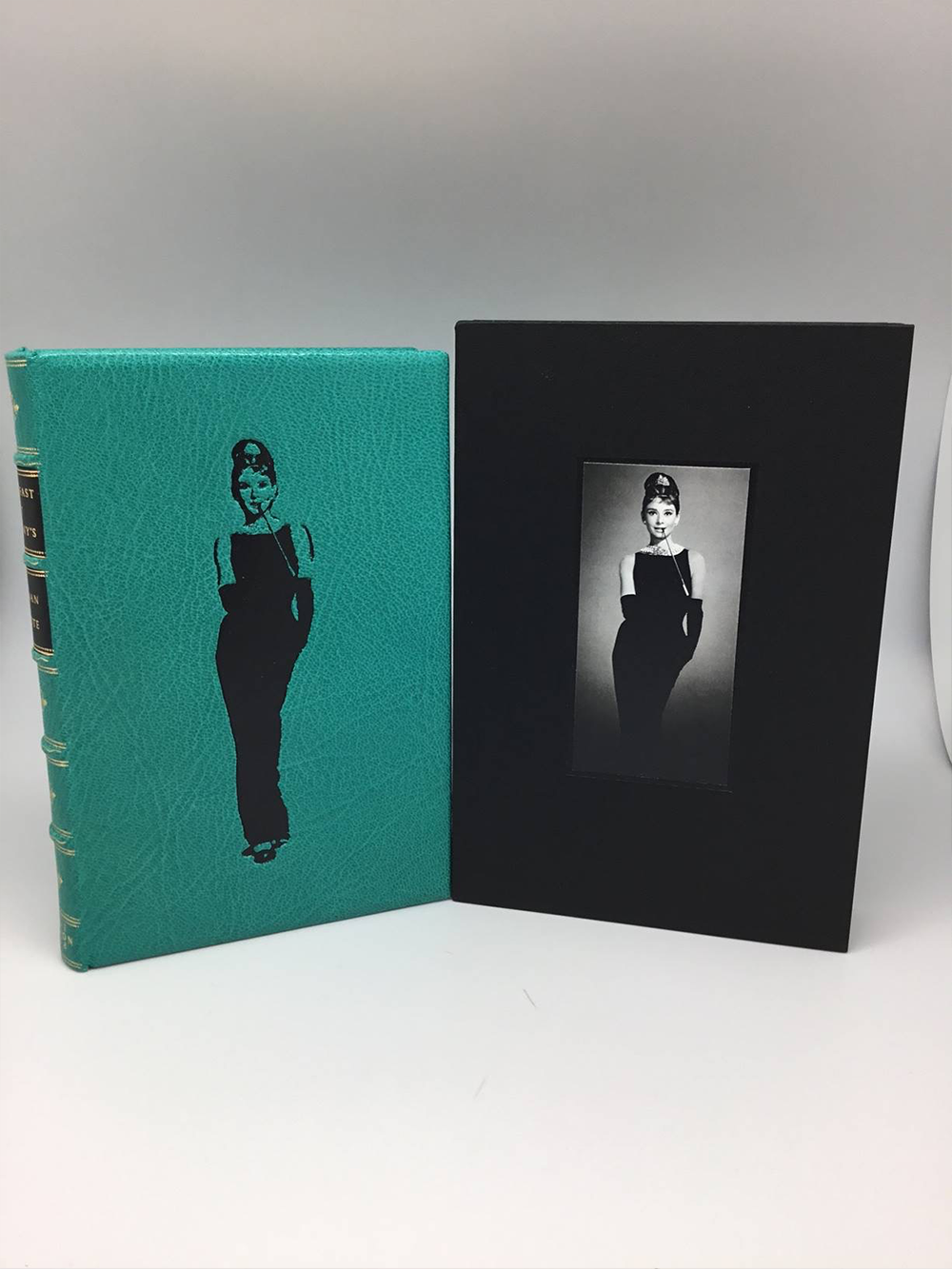
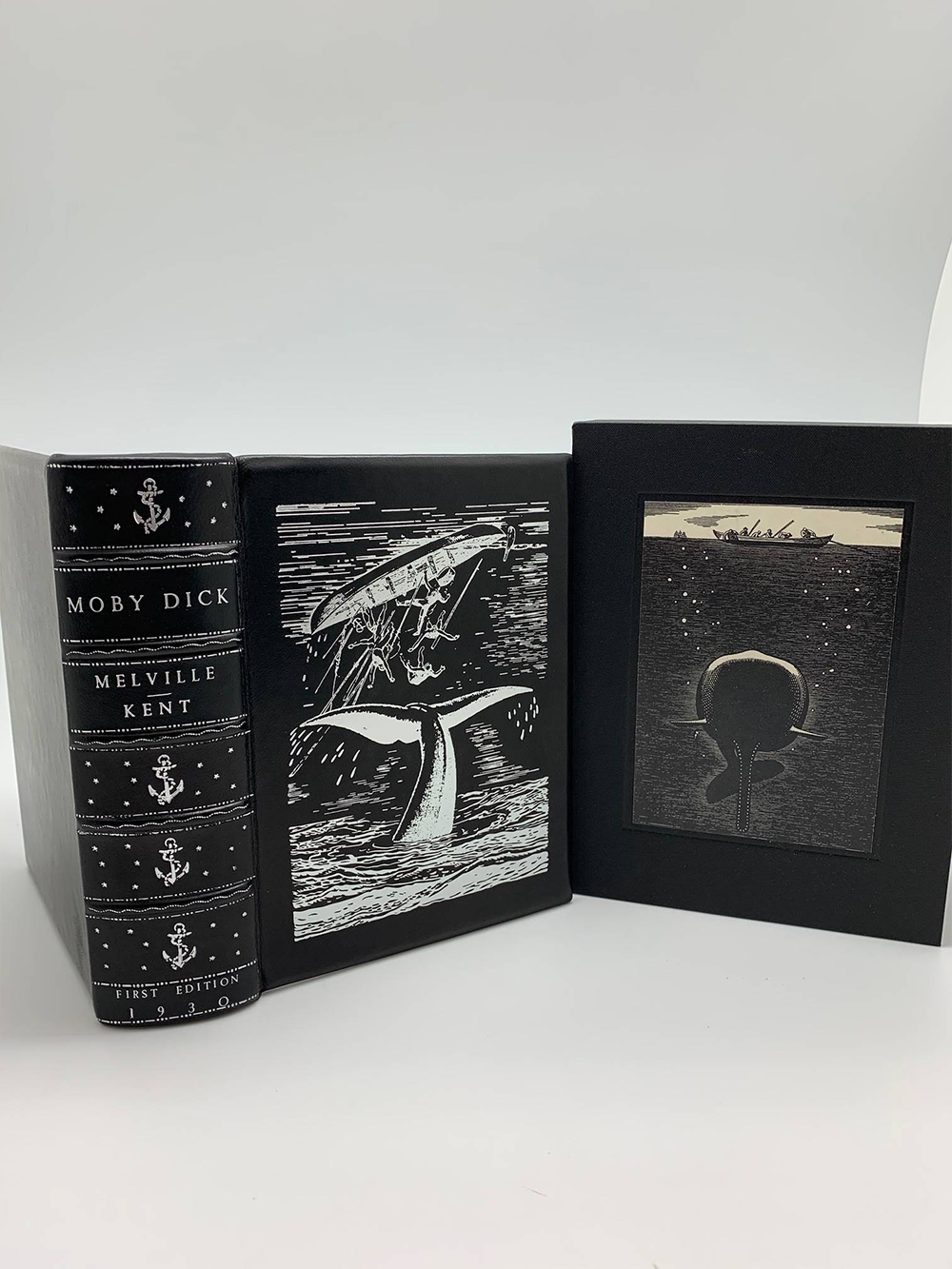
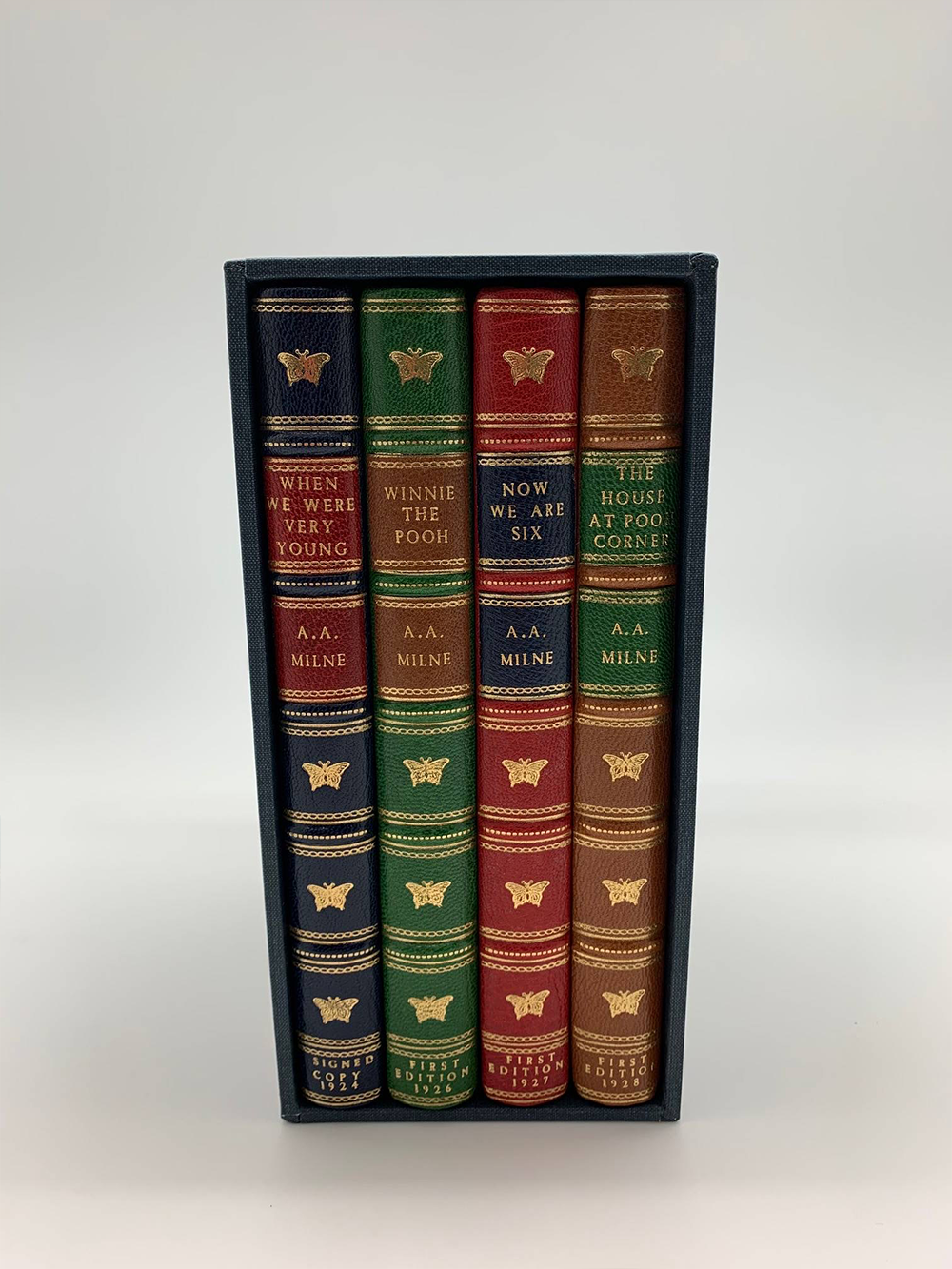
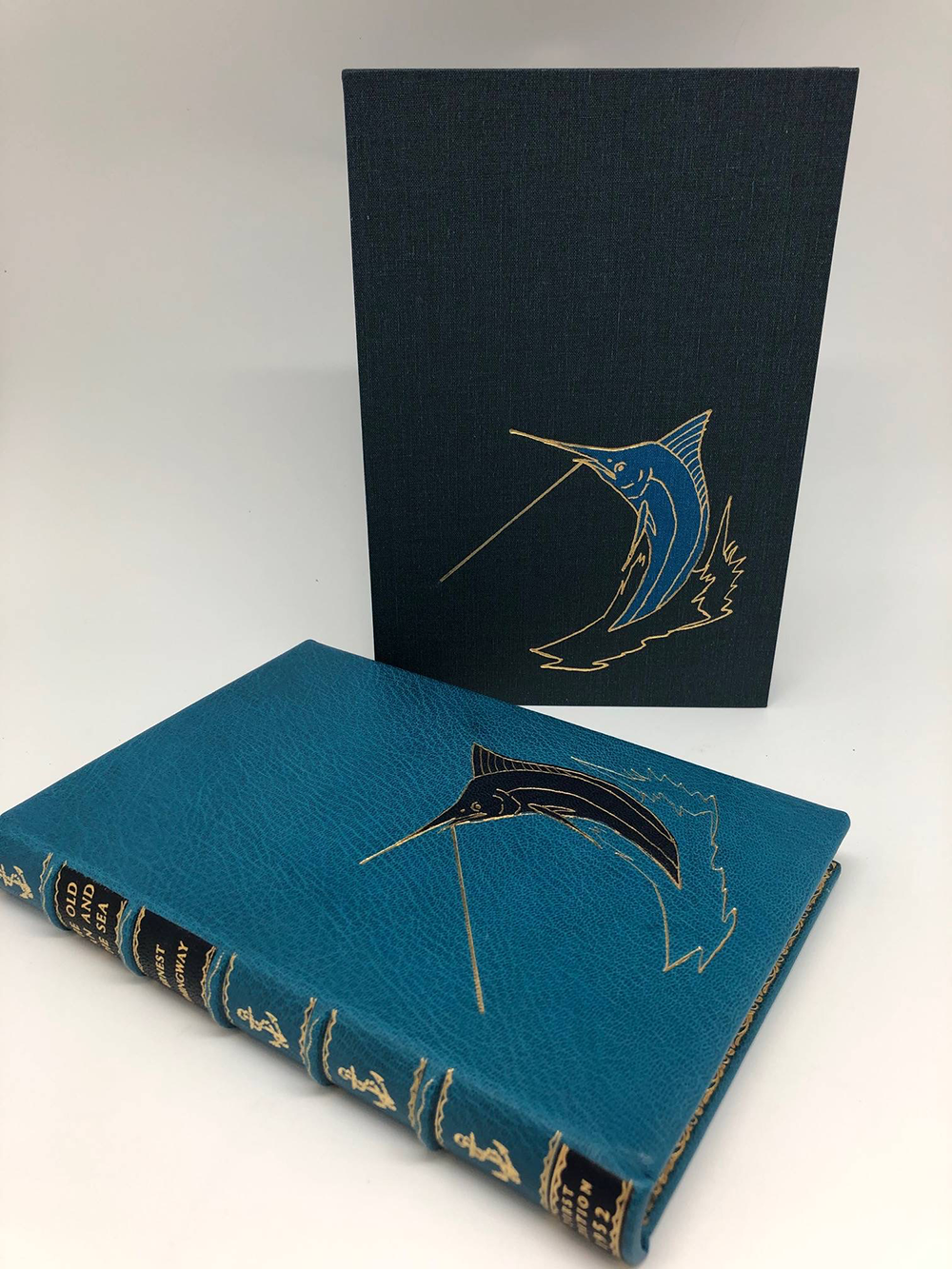
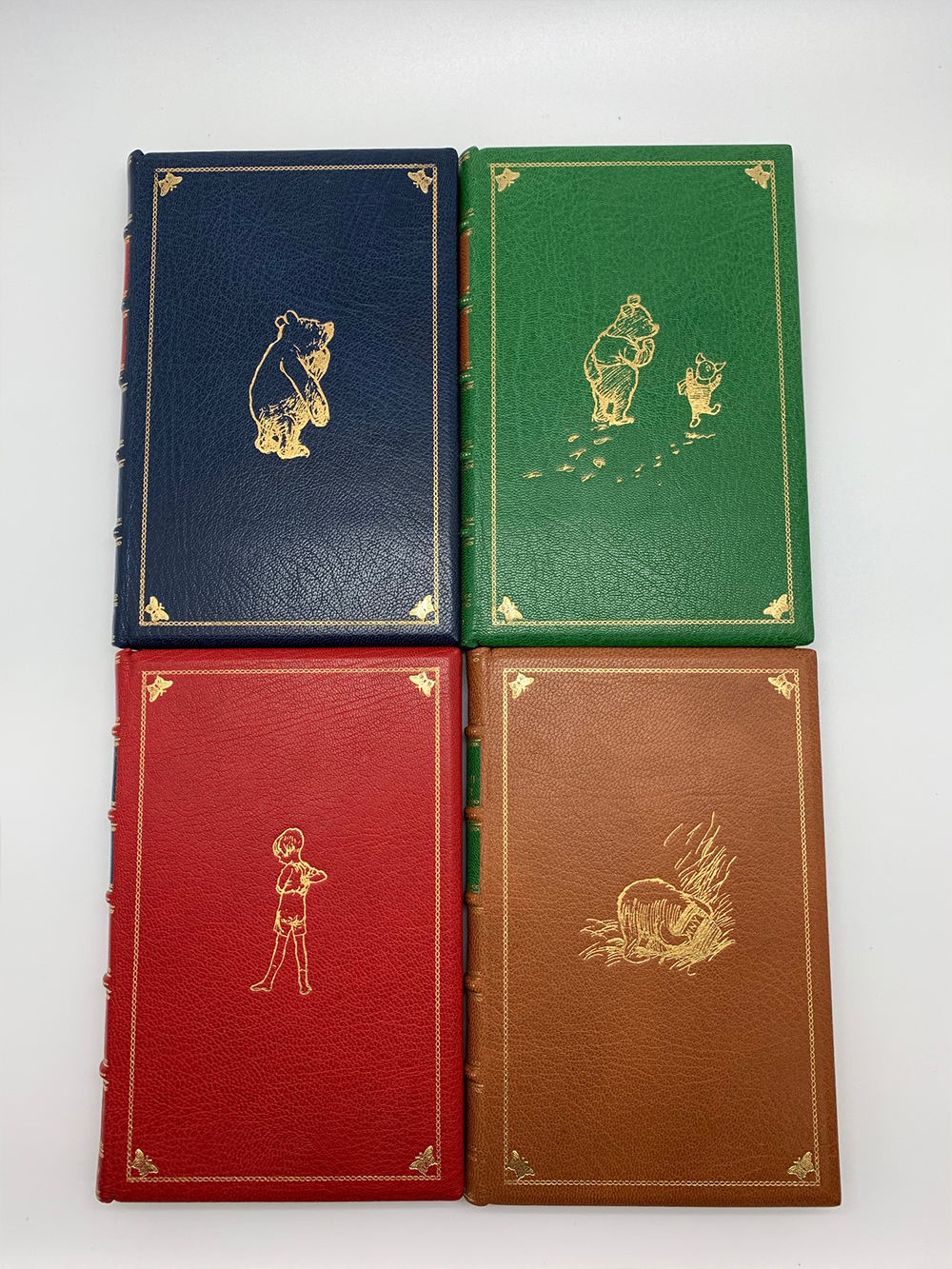
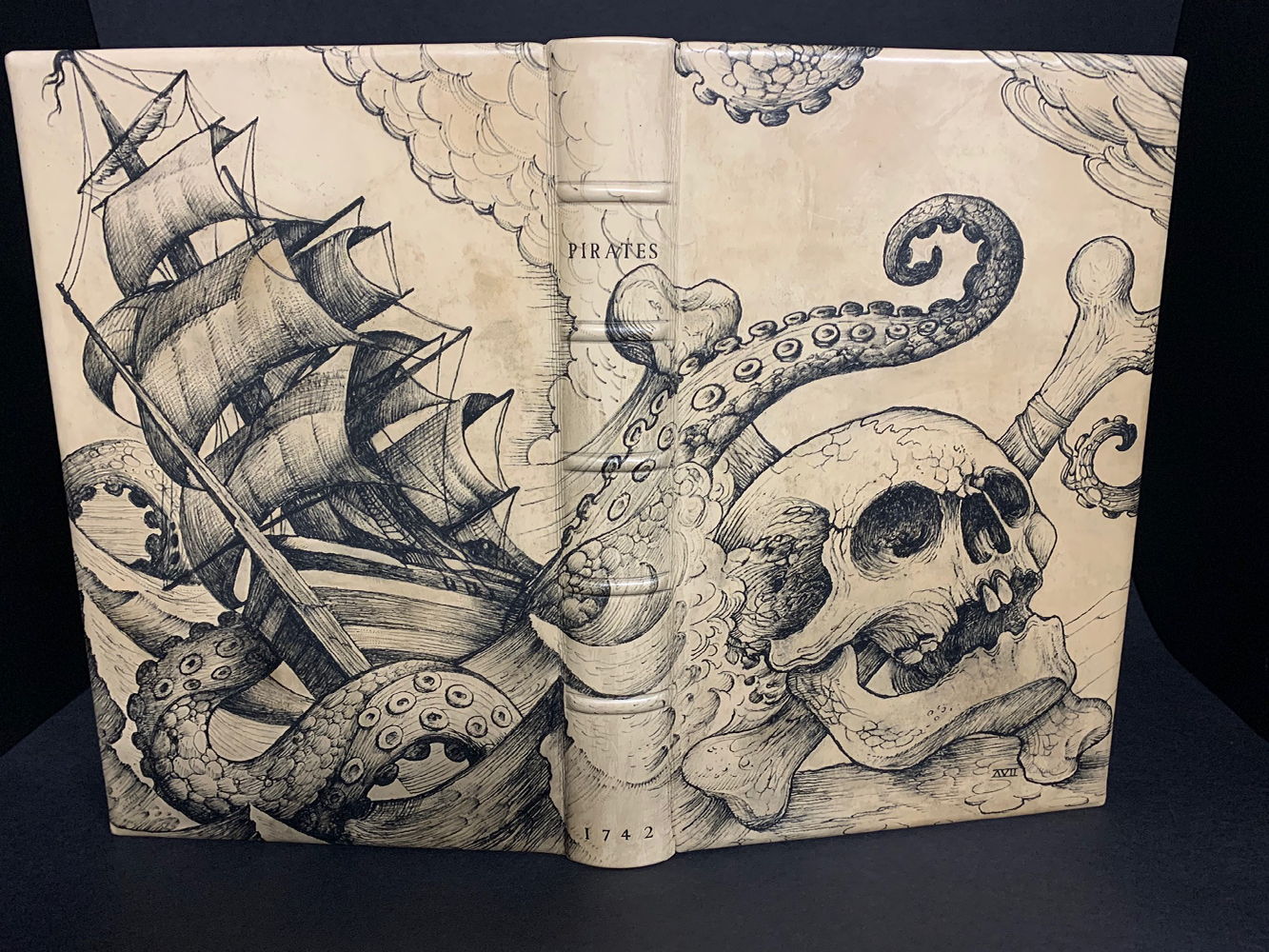
6. What is one thing you wish people knew about your craft?
I would have to say, I wish people understood how long the process of restoration can take, and how difficult it can be. The amount of training and study that is required to work on a piece that is sometimes centuries old. Also, the understanding that this is rapidly becoming a lost art, particularly in North America, as there is no apprenticeship system here, and even in some colleges it is a very basic course, often with no hands-on work at all.
7. How long does it take to bind a book?
That is a never ending answer, simple rebinding can be a couple of hours, to design and execute a design binding, can take months, a complicated restoration on a book, can also take many weeks with drying times for each process. Here is an example of a book that took two and a half years to complete.
8. What is the process of binding a book?
Let us show you!
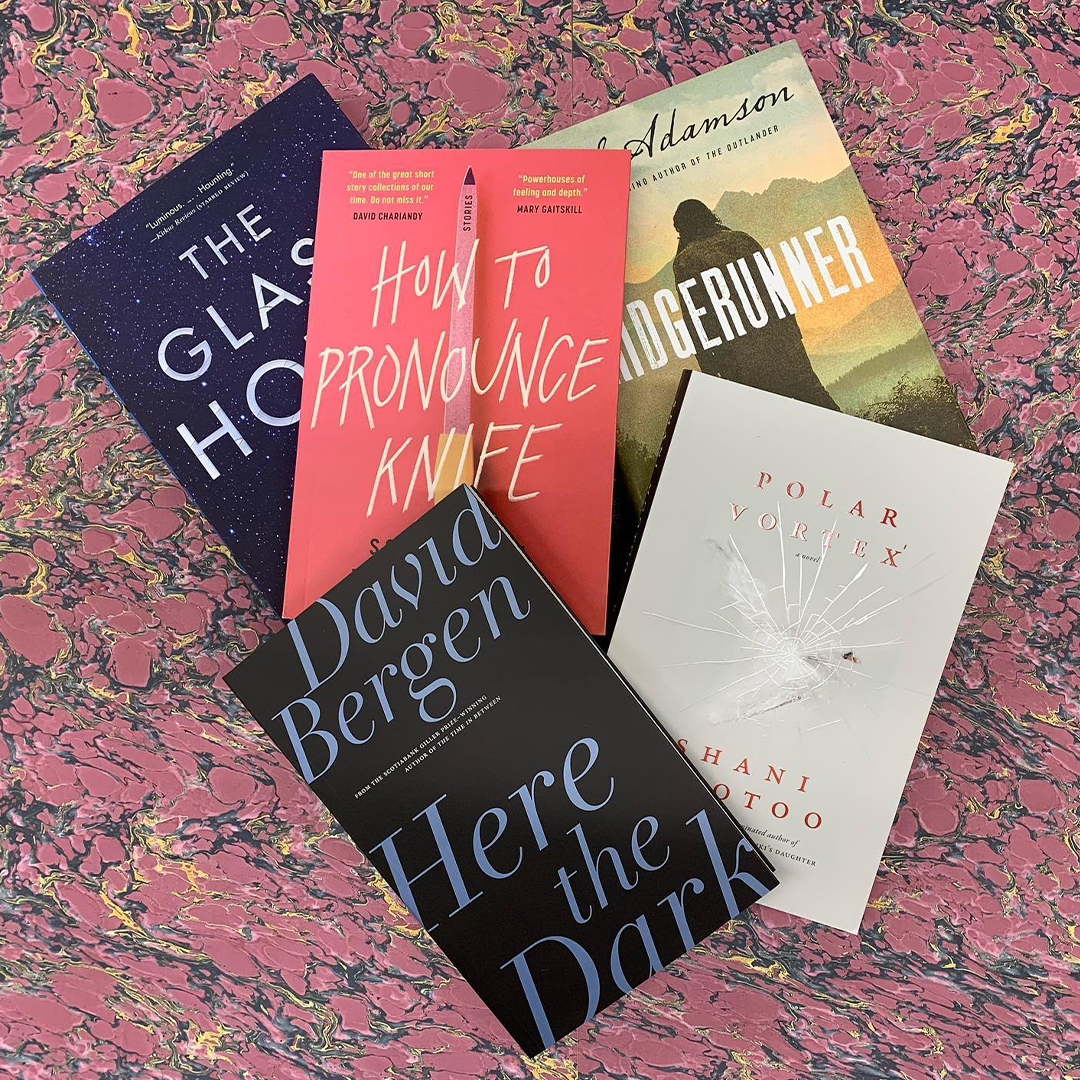
Step 1: Receive the books.
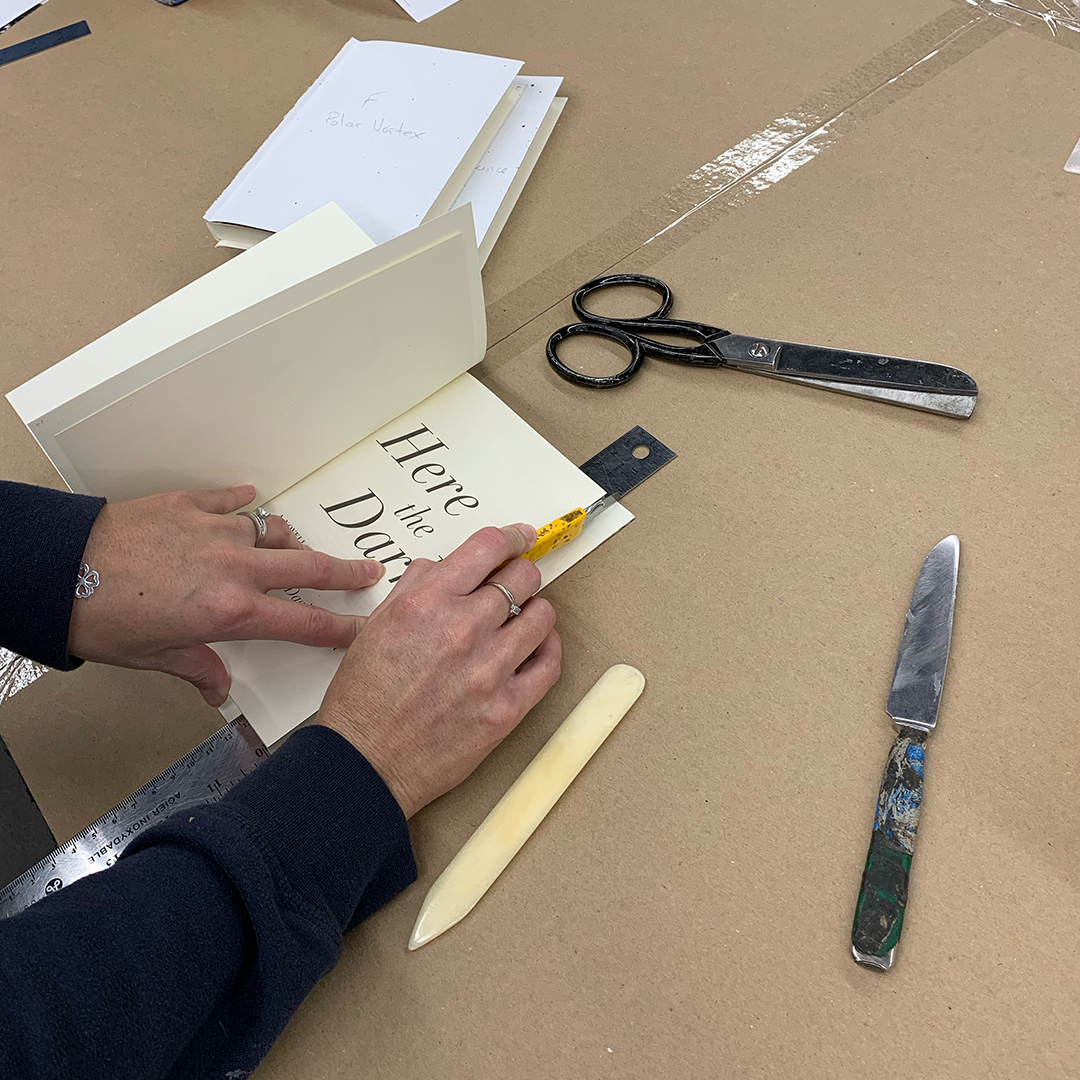
Step 2: We add the end papers and trim to size.
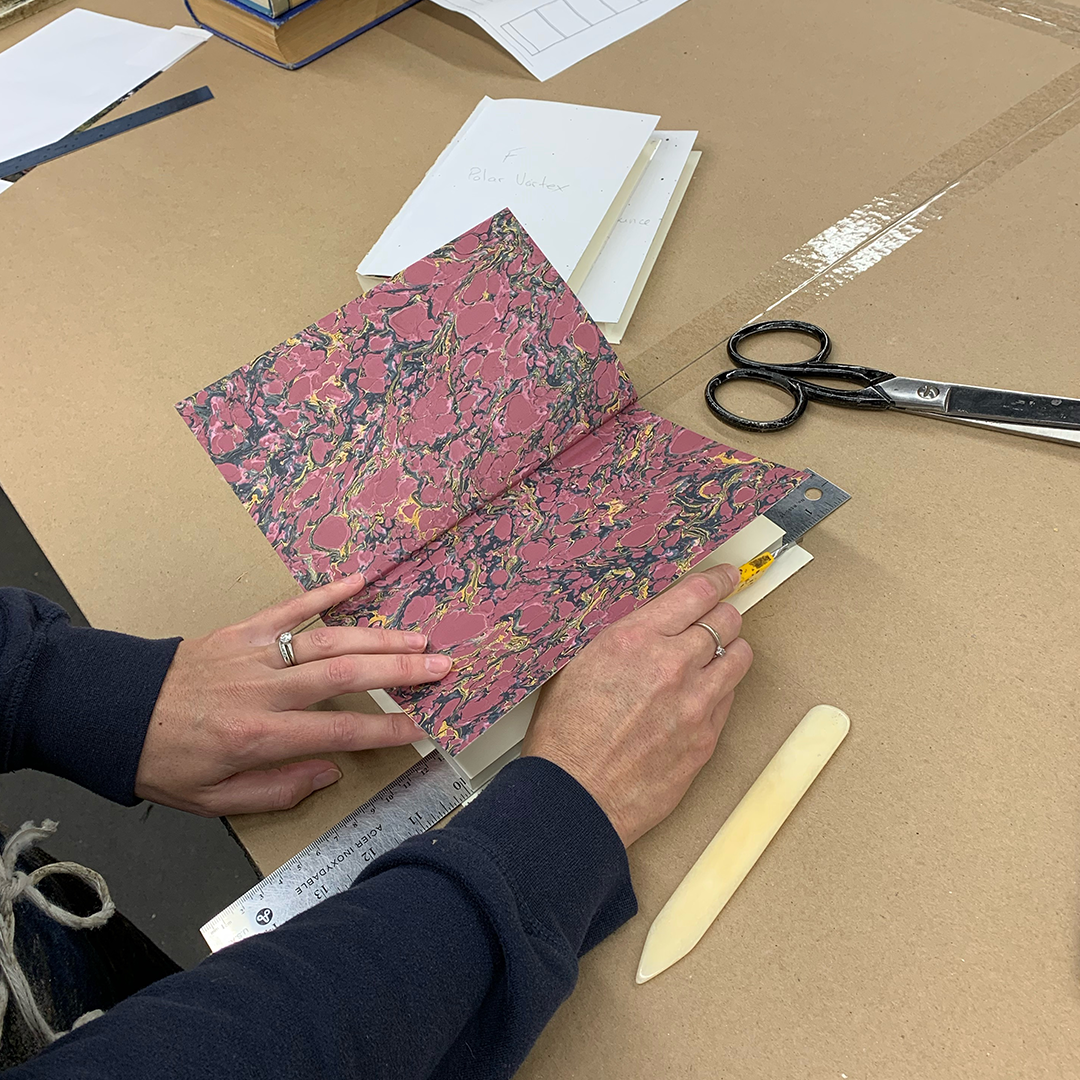
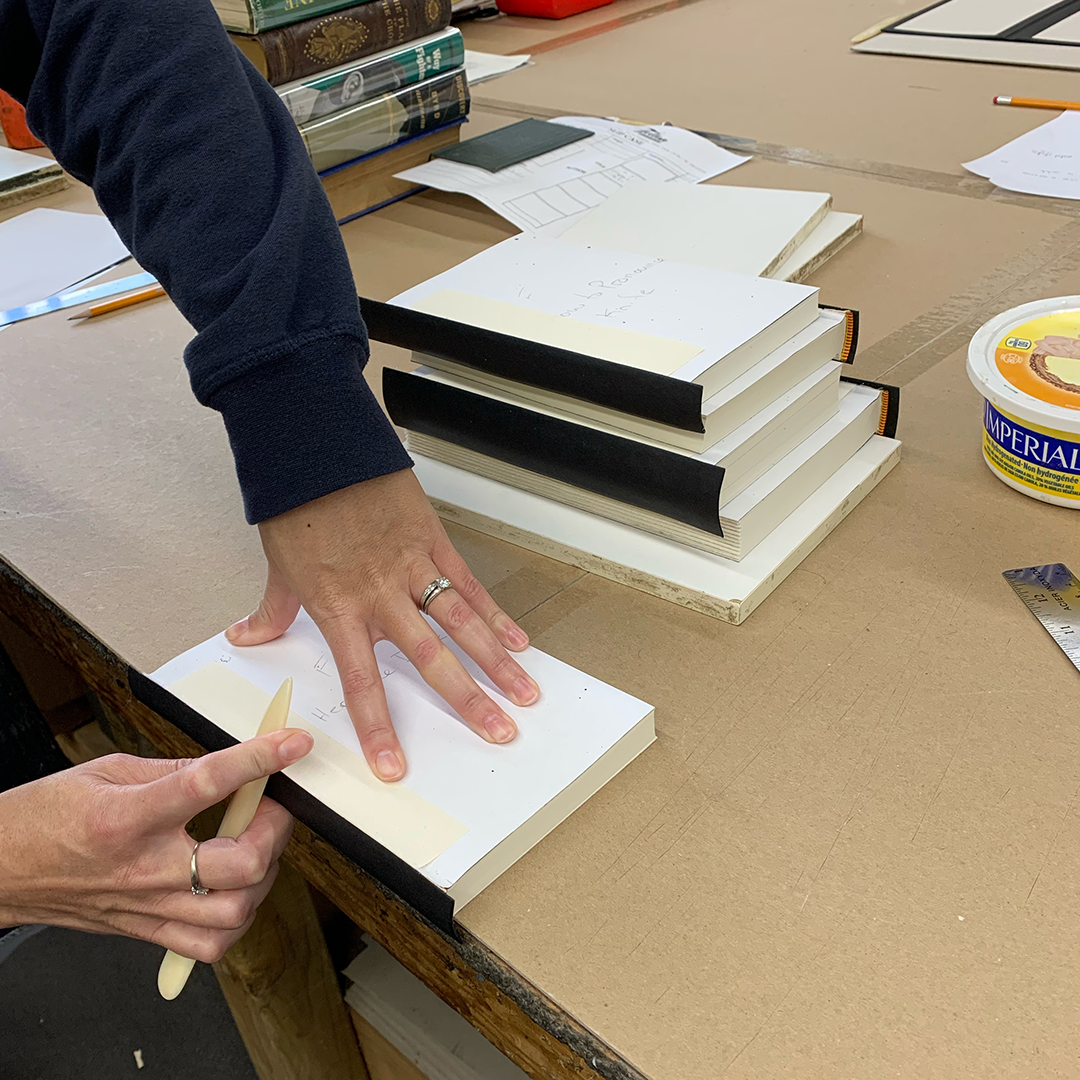
Step 3: Here, the books have been rounded and backed. We are putting on the headbands and hollow backings.
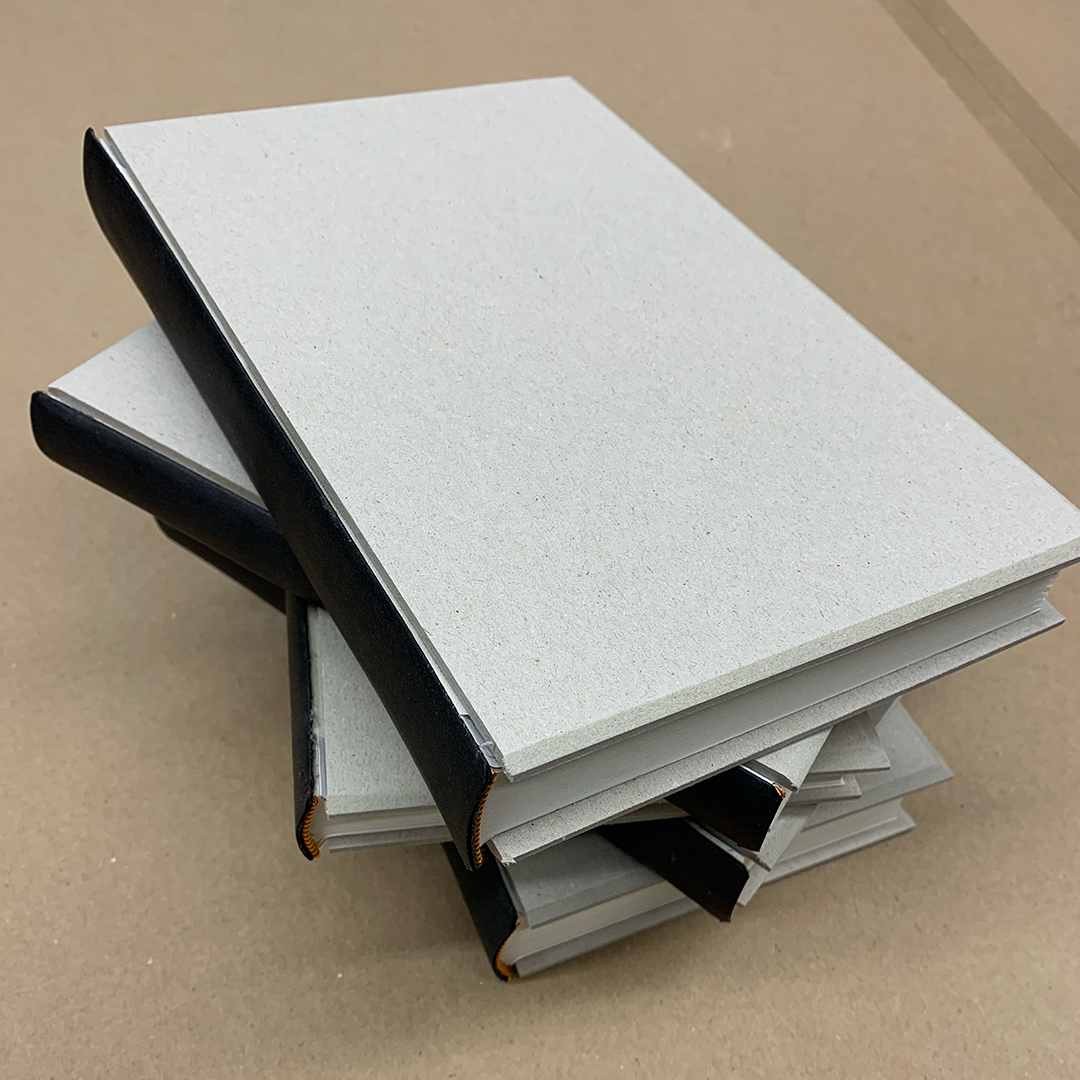
Step 4: The boards have been cut to size and the edges bevelled.
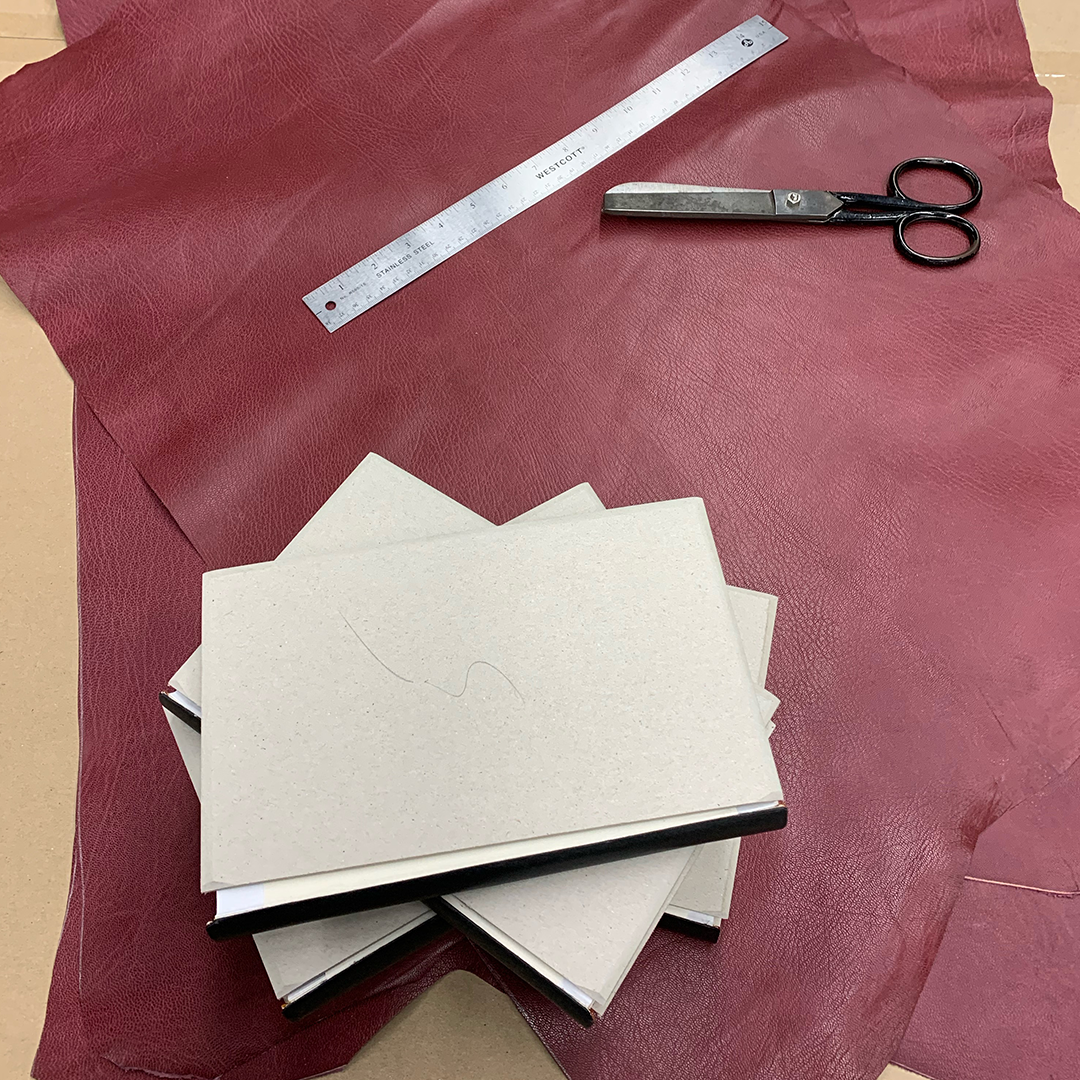
Step 6: Cut the leather for each of the individual books.
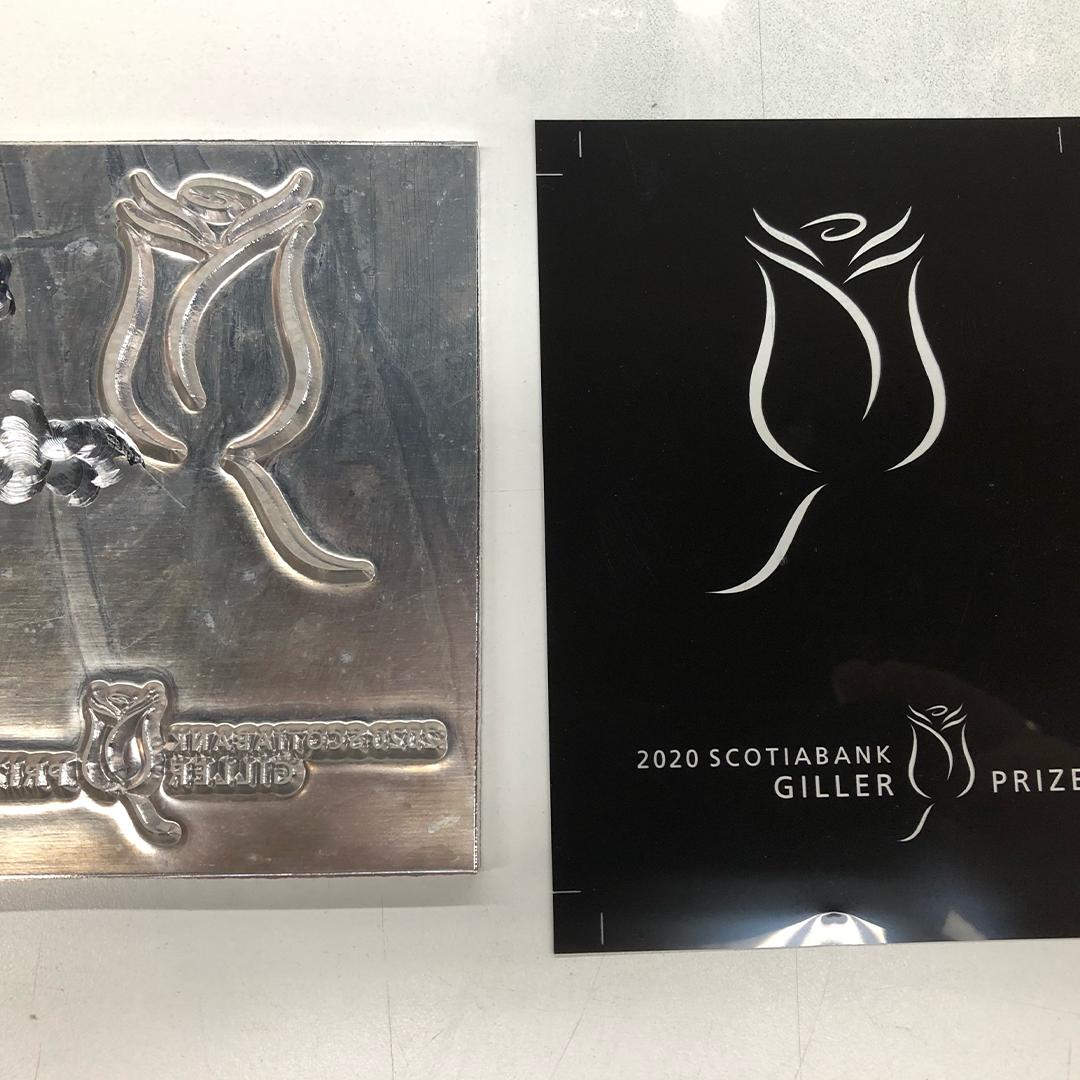
Step 7: Prepare the die for stamping the covers.
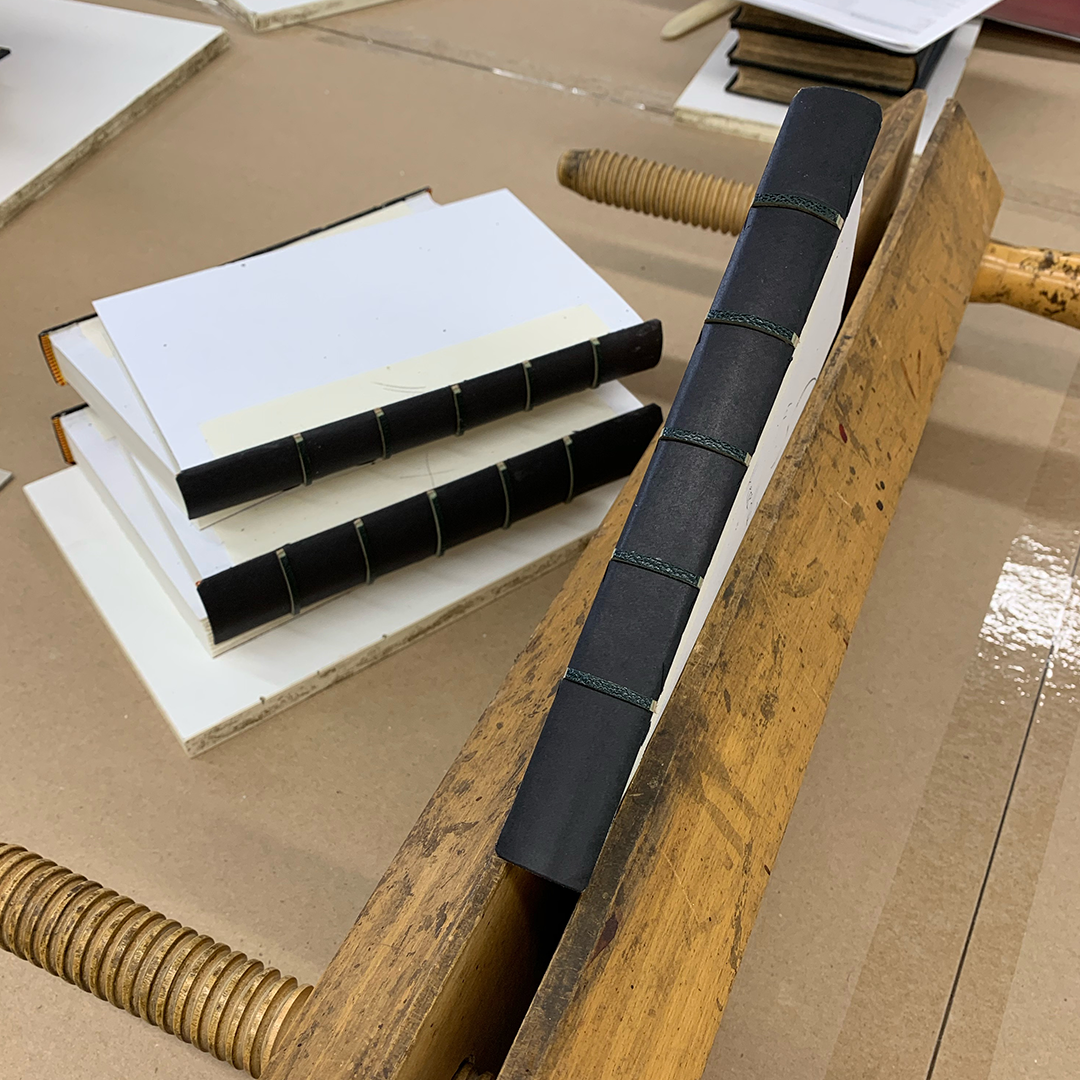
Step 7: Put the raised bands on the book spine.
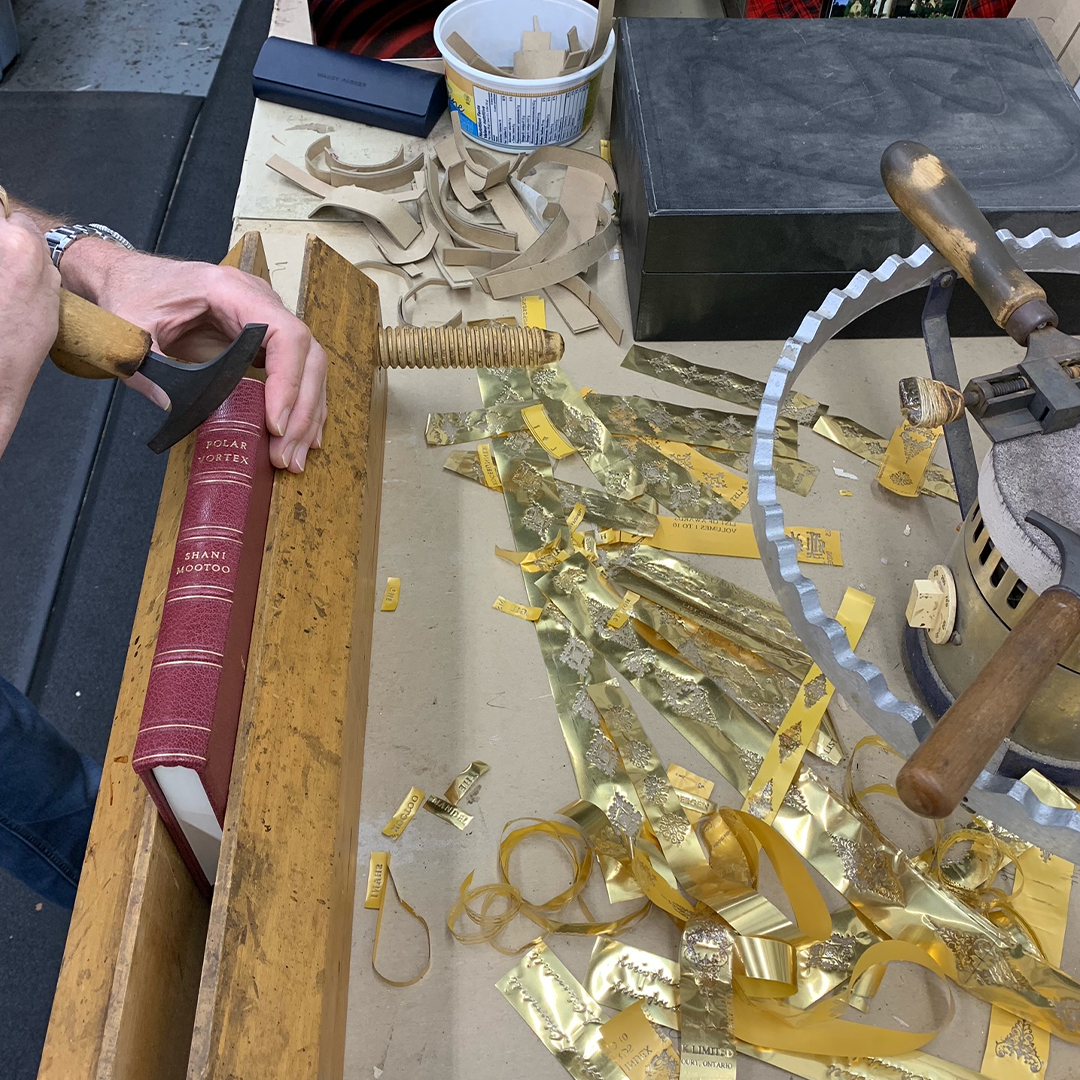
Step 8: Blind tooling is completed on the spine.
A huge thank you to the incredible team at Felton Bookbinding for the amazing job they did leather binding this year’s Scotiabank Giller Prize shortlisted books. Special thanks to Keith for answering these questions and Stacy for providing photos and videos. We encourage you to follow Felton Bookbinding on Facebook and Instagram!
